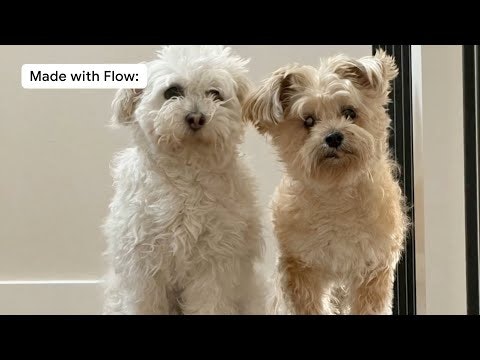
Flow now brings your images to life with speech. Plus, we’re expanding Flow and the Google AI Ultra plan to 76 more countries.
blog.google
Table of Contents
Overview
Google’s experimental “Speech in Flow” feature adds native speech generation to the Flow AI-filmmaking platform. Released in July 2025, the capability lets creators add context-aware dialogue or narration to image-to-video clips made with Veo 3. Speech is optional, language-limited (currently English), and subject to Google’s generative-AI safety guardrails, but it removes a major post-production step for short-form content.Speech in Flow extends Flow’s Frames-to-Video pipeline: you upload or generate a starting frame, Flow animates it into an 8-second clip, and now the same prompt can embed synchronized speech. Voices are synthesized on Veo 3’s audio stack and mixed with any ambient sound the user already requested. Google positions Speech in Flow as an R\&D preview—quality and voice variety will evolve—but even at launch it delivers intelligible, lip-matched speech without third-party tools.Key Features
- AI-generated speech for images: Turn a single frame into a talking clip in one pass.
- Driven by Veo 3: Video and audio share the same latent timeline for better sync.
- Integrated with Flow UI: Speech is a toggle inside the Frames-to-Video mode; no separate upload.
- Promptable dialogue: Include the exact line in quotes or let the model improvise contextually.
- Basic voice control: Choose masculine, feminine, or neutral tone plus three emotion presets; regional accents and custom voice cloning are not yet available.
- Compliance filters: Dialogue involving minors is muted; disallowed content follows Google’s GenAI policy.
How It Works
- Open a project in Flow and switch to Frames-to-Video.
- Upload a 16:9 or square image, or pick a frame from a prior generation.
- In the prompt, include the spoken line in quotation marks and turn on “Generate Speech.”
- Select the emotion preset (neutral, excited, cinematic) and click Generate.
- Flow renders an 8-second 24 fps MP4 with speech baked into the stereo track.
- Download or extend the clip as usual; successive edits retain the audio layer.
Use Cases
- AI-narrated shorts: Quick character monologues for TikTok or YouTube Shorts without human voice-over.
- Talking photo albums: Animate family portraits with greetings or anecdotes.
- Micro-learning assets: Diagram snapshots that explain themselves for classroom slides.
- Prototype animation voices: Fast scratch tracks for storyboards before hiring voice talent.
Pros \& Cons
Advantages
- Reduces post-production time by eliminating separate TTS and audio-sync steps.
- Speech is generated in-scene, so timing and lip motion align automatically.
- Works inside Flow’s credit system—no extra cost or export/import hassle.
Disadvantages
- Experimental: phoneme accuracy and voice diversity are still limited.
- Users cannot upload custom voice samples yet.
- Only available through Flow; not a standalone API.
How Does It Compare?
| Platform | Speech Support | Distinguishing Point | Current Caveats |
|---|---|---|---|
| Google Flow (Speech in Flow) | Native, English, prompt-based | Video \& speech generated together on Veo 3 | Experimental, limited voice presets |
| Runway Gen-4 Turbo | Text-to-speech layer; sound effects via prompt | High-resolution video, optional AI audio | Voice tracks not lip-synced; no dialogue analysis |
| Pika Labs Sound Effects + Lip Sync | Separate SFX generator; ElevenLabs voice sync | Free tier, multi-language lip-sync | Audio requires two steps; occasional mouth mismatches |
| Luma Dream Machine “Video-to-Audio” | Auto audio or prompt SFX | Totally free beta for up to 30 s clips | No controlled dialogue, only ambience |
| OpenAI Sora (preview) | None (silent output) | Long 1-minute photorealism | Requires external TTS and manual mixing |
| Synthesia | Studio-style avatar TTS | 120+ languages, brand avatars | No animated photo input; costlier per minute |
Final Thoughts
Speech in Flow is an important step toward end-to-end AI video creation. Early adopters get instant, integrated voice-overs, but should expect occasional mispronunciations and a narrow style palette. As Google refines language support, emotion control, and custom voices, Flow could become the fastest route from concept art to fully narrated micro-cinema. Creators who value seamless pipelines over granular vocal control will benefit today; those needing multilingual, actor-grade delivery may prefer hybrid workflows until the feature matures.
Flow now brings your images to life with speech. Plus, we’re expanding Flow and the Google AI Ultra plan to 76 more countries.
blog.google
